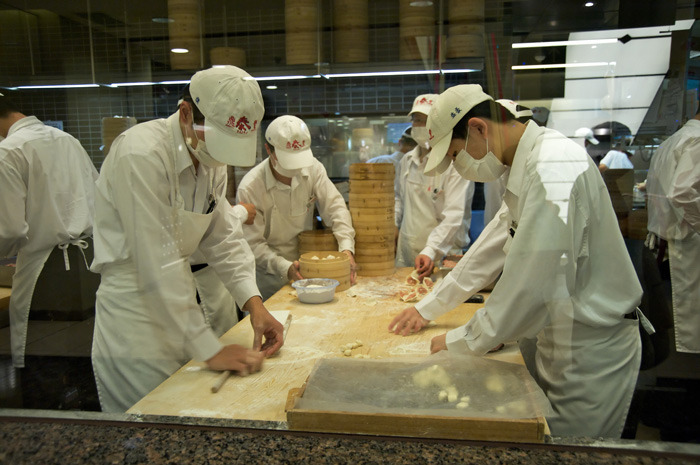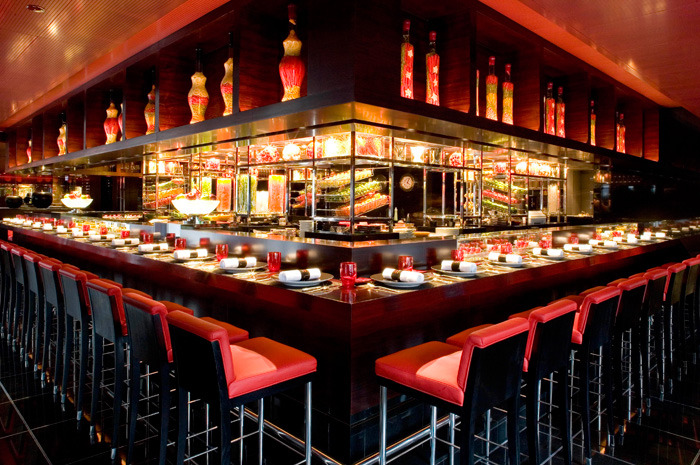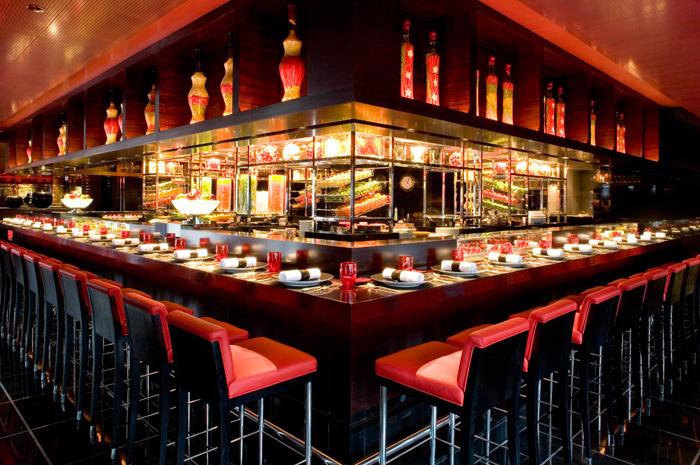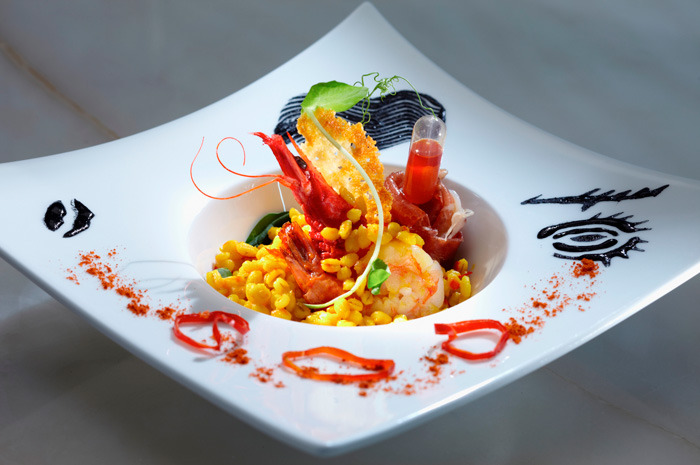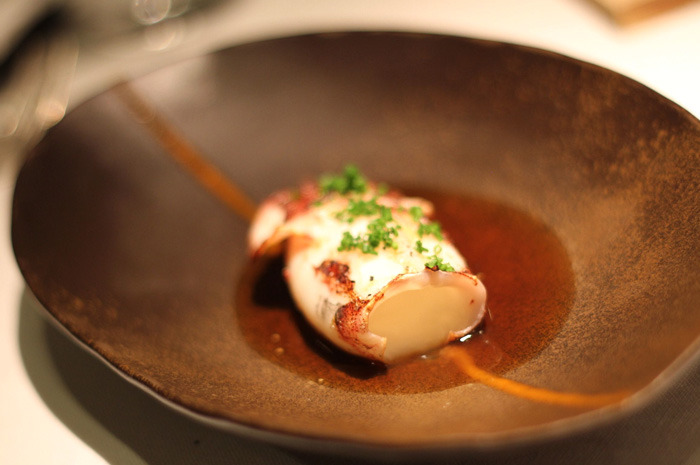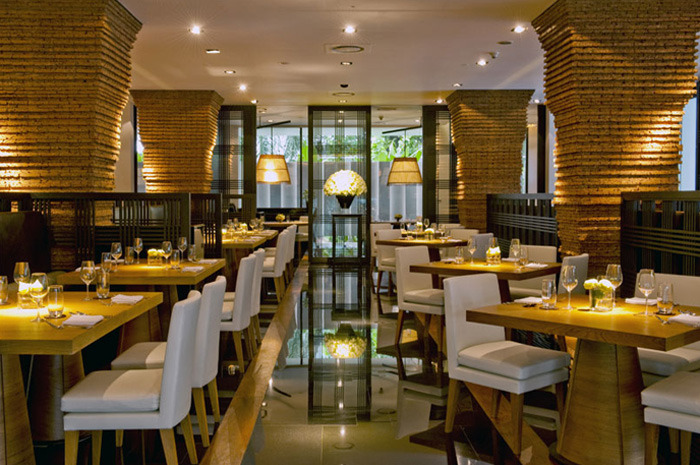10 Best Restaurants In Asia Slideshow
10 Best Restaurants in Asia
These 10 restaurants are among the continent's very best.
#10 Pierre (Hong Kong)
With its view of Hong Kong's harbor from the 25th floor of the city's Mandarin Oriental Hotel and its high-end French fare, which earned it two Michelin stars, celebrated chef Pierre Gagnaire's Pierre is a prime destination for those looking for a fine dining experience in central Hong Kong. A few menu highlights include morel mushroom tart with yellow wine, veil of Beaufort cheese, and golden grapes; poached line-caught sea bass topped with shallot and liquorice crumble; and roasted duck foie gras glazed with hibiscus "bigarade" sauce.
#9 Fatty Crab (Hong Kong)
A daring Asian branch of New York City's original Fatty Crab, this lively new restaurant offers a carefully curated American take on Asian cuisine, with "a little southern BBQ in the mix." Its raw bar items are particularly tempting, such as market oysters, razor clams with green peppercorns and mint, and chilled Dungeness crab. The New York location's famous chili crab is still on the menu, along with new items including bacon and clams, served with house-smoked bacon, green peppercorns, and yuzu. The Hong Kong restaurant has a layout consisting of multiple rooms, a raw bar, and a separate bar for drinking. Click here for more on the Hong Kong Fatty Crab.
#8 Catalunya (Singapore)
Catalunya is a contemporary Spanish restaurant built around a descending glass dome in the Fullerton Pavilion complex, overlooking Marina Bay. Barrel-stave-shaped columns, high-gloss bare hardwood tables, and floor-to-(high)-ceiling windows give the place something of a sailing-ship feeling, while the menu honors land and sea alike, in the best Catalan tradition. Esqueixada (shredded raw salt cod salad), the meat-and-mashed-potato croquettes called bombas, ground beef and chicken canelones, rice with fresh grilled lobster, and other classics are done right.
#7 L'Atelier de Joël Robuchon (Hong Kong)
Though legendary French chef Joël Robuchon credits a tapas bar in Alicante, Spain, for inspiring his counter-service L'Atelier format, the first example of this now-international chain opened in Tokyo in 2003, a few months before his first Parisian "atelier" (studio) was launched — and the resemblance of the place to a sushi bar cannot be ignored. He now has L'Ateliers around the world. They're all good, but this Hong Kong hot spot is the only one with three Michelin stars. The format is basically modern (and sometimes classic) French cuisine served tapas-style, from white asparagus velouté with paprika and hollandaise cream to roast guinea fowl with herbs, mushrooms, and crushed potatoes to raspberry mousse with coulis of red fruits and vanilla and strawberry ice cream — all superb.
#6 Din Tai Fung (Taipei)
What began as a mom-and-pop cooking-oil shop has evolved into the home of what is arguably the world's best xiao long bao, a type of steamed bun filled with broth. (In English, the xiao long bao is often called a "soup dumpling," though it isn't really a dumpling at all.) Practically since the place served its first bamboo basket of translucent Shanghainese buns, there has been a steady line outside, and the owners have expanded internationally, with more than 50 outlets around the world. While the menu has grown to feature a range of steamed and fried dumplings, fried rice, soups, and noodles, you can still watch the artisans expertly pleating each soup-filled bun amid towers of steaming baskets in the open kitchen. Each bite-size bun has precisely 18 folds, and is a perfect package, implausibly delicate, that sags when grasped between a pair of chopsticks, and tastes as perfect as it looks. The birthplace of a worldwide dumpling chain was honored as the best restaurant in Asia last year on The Daily Meal's 101 Best Restaurants in Asia list.
#5 Felix (Hong Kong)
A meal at this luxurious restaurant — named after Felix M. Bieger, a 60-year veteran of The Peninsula Hotels and three-time general manager of this Peninsula — is a feast for the senses. Located on the swanky hotel's 28th floor, the restaurant offers great visuals both inside and out. When Felix first opened its doors in 1994 as part of the Peninsula's Tower extension, it was the first rooftop restaurant in Kowloon and the first restaurant in Asia designed by Philippe Starck. The space is ultra-contemporary and a bit surreal (the restaurant boasts two zinc and aluminum cylinder-shaped areas known as "snails" created around spiral staircases, one containing The Wine Bar and The Balcony, the other holding The American Bar and The Crazy Box, a discothèque). The floor-to-ceiling windows, meanwhile, offer stunning views of the city. Chef Yoshiharu Kaji's modern European à la carte and set menus change regularly, but signature dishes include 'grilled Japanese A5 beef tenderloin with green pepper sauce, pickled red onion, marinated lycium, and deep-fried potato; pan-seared duck liver and mousse with warm potato cream soup, potato cereal, and onion jam; and grilled red tuna with braised bell pepper and tomato, caramelized pineapple, and soy vinaigrette.
#4 Narisawa (Tokyo)
You can guess at what to expect when you enter this calm, bright dining room with its well-spaced white-clothed tables, its beautiful glass plates with the name of the restaurant etched into them, and the cylindrical dough-filled mini-oven perched at the edge of each table that nobody explains (but that you can guess correctly will produce an amazing bread course, literally baked tableside): a precisely executed, exquisite meal, full of subtle, imaginative touches. Chef Yoshihiro Narisawa studied extensively in Europe and employs classic French technique using Japanese ingredients. Fresh uni gelée, cuttlefish topped with a sauce made with liquid nitrogen, an oyster smoking under a bell jar, Kobe beef coated to look like a giant truffle — these are just some of the memorable dishes you may be served before the masterful mini-macaron and perfect French-pastry-laden dessert cart. The San Pellegrino World's 50 Best Restaurants list ranks Narisawa at #14.
#3 nahm (Bangkok)
Australian-born Thai food expert David Thompson, having run acclaimed Thai establishments in Sydney and London (where he won the first ever Michelin star for Thai cuisine) opened a branch of his flagship nahm in the Metropolitan Hotel in Bangkok, where he now lives, in 2010. A stickler for authenticity, like so many other food experts who have adopted cuisines to which they were not born (think Diana Kennedy or Rick Bayless vis-à-vis Mexican cooking), Thompson offers dishes you're not likely to have experienced anywhere else, even if you eat Thai food regularly: chopped prawns stir-fried with grajorn flowers; red curry of quail with deep fried shallots and Thai basil; kaffir lime and smoked fish relish with sweet pork, salted fish dumplings, coconut poached bamboo and vegetables... the treasures go on and on. According to the San Pellegrino World's 50 Best Restaurants list, this is the 13th best restaurant in the world.
#2 Ishikawa (Tokyo)
A Michelin three-star establishment behind the Bishamon temple in Tokyo's so-called geisha district, Ishikawa is a showcase for the talents of its eponymous chef–owner, Hideki Ishikawa. Known for his modesty and concern for his customers, Ishikawa eschews modern culinary trickery and composes daily-changing menus from first-rate ingredients, which he treats simply and with great skill. His past triumphs have included bamboo-shoot dumpling soup with wakame seaweed; steamed rice with clams, sea urchin, and wasabi blossoms; quail and wild mushroom shabu shabu; and a deep-fried "sandwich" of sea bream and monkfish liver between thin slices of lotus root.
#1 Sukiyabashi Jiro (Tokyo)
Jiro Ono still dreams of sushi (as the title of a 2011 film about him suggested). He was the first sushi chef to earn three Michelin stars, and has repeatedly been hailed as the best sushi chef in the world — yet at the age of 90, he says "Even at my age, I haven't reached perfection." His 10-seat, modest-looking, sushi-only restaurant, hidden away in a Ginza subway station, has become a gastronomic shrine of international repute. Reservations are hard to come by, and the price is steep — more than $300 per person for an omakase 20-piece sushi repast that is typically over in about half an hour! Is it worth it? True sushi fanatics say yes, without a doubt, for the quality of Ono's fish and rice to his unfailing skill at preparing them. If you, too, dream of sushi, this may be the best restaurant experience of your life.
